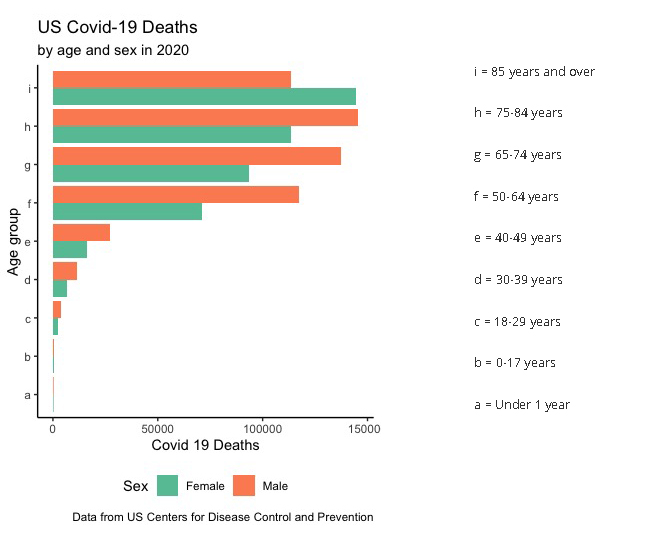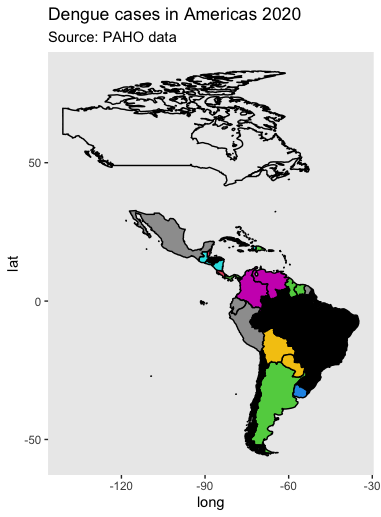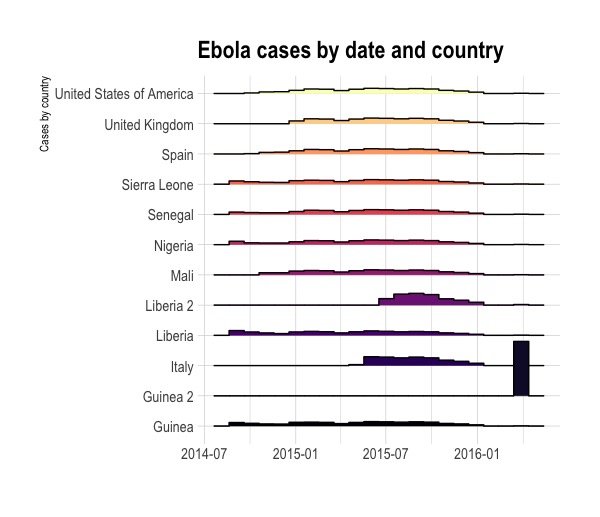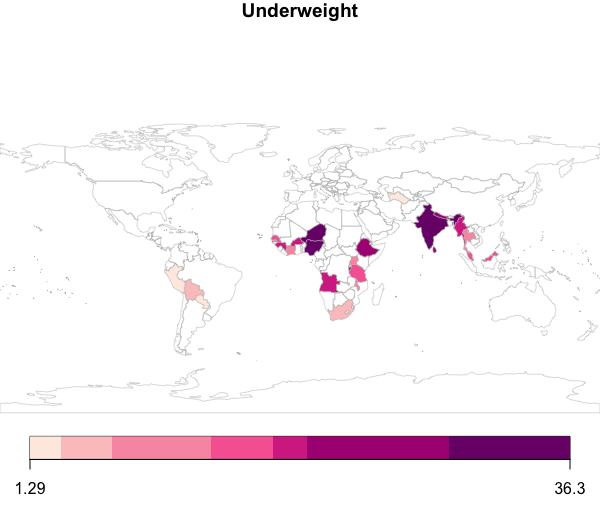Forgotten pandemics
adjective. UK /pænˈdem.ɪk/ US /pænˈdem.ɪk/
(of a disease) existing in almost all of an area or in almost all of a group of people, animals, or plants
O
n 11st March 2020, the World Health Organization (WHO) declared COVID-19 as a pandemic. It presented an unprecedented challenge to public health, food systems and the world of work.
It changed the world as we have known. It was an unprecedented humanitarian crisis, with worldwide effects in health, economy, job conditions, food, transportation, borders and security, among other.
Developed countries started to face an unforeseen situation, affecting to healthy condition. More accustomed to fighting other enemies, the coronavirus marked a turning point in the 21st century.
Pandemic, epidemic, endemic. What is what
As the WHO definition states, a pandemic occurs when a disease’s growth is exponential. This means each day cases grow more than the previous one. It is not related with virology, population immunity, or disease severity. It means a virus covers a wide area, affecting several countries and populations.
Not all diseases have the consideration of pandemic. They could also be epidemic or endemic.
The Centers for Disease Control and Prevention (CDC) describes an epidemic as an unexpected increase in the number of disease cases in a specific geographical area. Yellow fever or polio are prime examples of epidemics.
It is important to notice that an epidemic disease doesn't necessarily have to be contagious. In fact, obesity is considered epidemic due to the rapid increase in rates.
Meanwhile, a disease outbreak is endemic when it is consistently present but limited to a particular region. This makes the disease spread and rates predictable. Malaria, for example, is considered endemic in certain countries and regions.
Covid-19 and the relevance of data
C
omparing daily Covid-19 deaths with other disasters were a common resource to understand the size of the tragedy. In the worst days of the pandemic, it was said that Covid deaths toll was like five Boeing 737 Max 8 jets crashing every day in the US. "Covid kills someone about every 15 minutes in LA".
Covid-19 pandemic has shown the relevance and importance of data and dataset. It has improved the value of timely, quality, open and disaggregated data and statistics because this information has been used for understanding, managing and mitigating the human, social and economic effects of the pandemic.

However, Covid-19 has also demonstrated how enormous can be huge data gaps, in terms of geographic coverage, timeliness, and the level of disaggregation required. And, for sure, the lack of dataset related with other pandemics. The forgotten pandemics.
Although there are several organizations that track some diseases (as Malaria, Cholera or Dengue), these datasets currently have a lot of problems:
- - Datasets are not updated (in the best of the cases, 2020 is the last year with official numbers).
- - Sometimes they only refer to at specific region (as Americas, in the case of Dengue) and not collect worldwide numbers.
- - In other diseases (as malnutrition), estimation> is the best way to have an idea of what’s happening in some countries because these nations are so poorest that they don`t have official databases of these issues.
Because of that, making a comparative of what happened with Covid-19 and other pandemic could be tricky and even dangerous, because some of the date related are misleading, both for the forgotten pandemic but also for Covid-19. Official stats from developed countries (as US or European ones) are more accurate than those that comes from other nations (as China or Southeast Asia).
Since 2020, more than 6 million people died with Covid-19. Only in 2020, 5 million children under 5 years died due to malnutrition
Even with all these considerations, there are a lot of learnings we can achieve regarding Covid-19 and other pandemics data related. The first one could be questioning why the official organizations have stopped to recollect data (or, at least, to update them) of other diseases during last two years.
Covid-19 data
G
lobally, there have been nearly 540 million confirmed cases of Covid-19. Of this, more than 6.3 million people has passed away with this illness. At the same time, official stats registered that nearly 12,000 million vaccine doses have been administered.
Almost 43.6% of deaths have been registered in America and another 32% in European countries. According to the official dataset, in the US there were 1.01 million deaths. Of this, 80% are among 65 year or over. This means that older people are more vulnerable to the effects of the disease, given that 5 million of the patients who died were 65 years of age or older.
The vaccine effort
B
efore having a vaccine or, at least, some pharmaceutical interventions that demonstrated to be effective, governments around the world enforce lockdowns to control the plague, as has been used in other outbreaks (as Ebola), nowadays and through History. Isolation, separation, and social control were key tactics during major epidemic emergencies.
As this lockdown were mainstream in March 2020, the scientific community started to make a massive effort to find a vaccine against this new virus. According to the COVID-19 vaccine tracker and landscape from WHO, 166 vaccines are in clinical development and another 198 are in pre-clinical development.
47,000 additional of Malaria deaths in 2020 were due to service disruptions during the COVID-19 pandemic
It only takes some months to get the first Covid 19 vaccine: on 21st December 2020, WHO validated the use for a COVID-19 vaccine to the Pfizer/BioNTech proposal. It is true that it was the first time that a vaccine received this emergency validation.
Eight months later, the FDA also approve Pfizer as the first Covid-19 Vaccine.
Normally, it takes a lot of time to have an appropriate vaccine for any health problem. For security reason, the candidates must complete different stages of development. It is usually taking eight to fifteen years on average to get from the lab into the hands of health-care providers.
Before Covid, the fastest a vaccine in being developed was four years. Following the emergence of Covid-19, however, researchers around the globe accelerated the process by carrying out stages of development simultaneously and by looking to new vaccine technologies.

One of the biggest contributors to any health development and improvement is the number of clinical papers that are being published. This documentation is available at PubMed, the US National Library of Medicine. As we can see in the table above, there are at least 265K papers covering Covid-19. Only HIV, who was discovered 40 years ago, has more literature among pandemics.
Other pandemics
T
wo years after the Covid and with millions of vaccine doses administrated, one of the most recurrent questions is: “Is the pandemic over?”.
There have been 249 pandemics throughout recorded history from 1,200 BC. Some of historic deadly pandemics were Black Death or Bubonic Plague (1347-1351), with 200 million; Smallpox (1520), with 56 million; or Spanish flu (1918-1919), with nearly 50 million of people passed away.
Only in Eastern Mediterranean Region there are right now another six pandemics. Let's see what's happening with some of these diseases.
Malaria
M
alaria transmission occurs in 85 countries across five WHO regions, up from 56 nations in the previous year. According to the World Malaria Report 2020, there were 241 million cases of malaria globally in 2020 and 627,000 malaria deaths, an increase of by 12% compared with 2019.
It is important to note that WHO recognized that increases in malaria cases and deaths were associated with disruption to services during the COVID-19 pandemic.
Africa is the region most affected by Malaria: 95% of cases and 96% of deaths occurs there. And 80% of all deaths in this region are among children aged under 5 years.
Dengue
D
engue is a viral infection transmitted to humans through the bite of infected mosquitoes. It has different levels of severity. Severe dengue is a leading cause of serious illness and death in some Asian and Latin American countries.
The global incidence of dengue has grown dramatically. It is estimated that about half of the world's population is now at risk. Although an estimated 400 million infections occur each year, over 80% are generally mild and asymptomatic, what means that 96 million manifests clinically (with any severity of disease).
Despite a risk of infection existing in 129 countries, 70% of the actual burden is in Asia.
Before 1970, only 9 countries had experienced severe dengue epidemics. The disease is now endemic in more than 100 countries in the WHO regions of Africa, the Americas, the Eastern Mediterranean, South-East Asia and the Western Pacific. The Americas, South-East Asia and Western Pacific regions are the most seriously affected, with Asia representing almost 70% of the global burden of disease.
Cholera
C
holera is an acute diarrheal infection caused by ingestion of food or water contaminated with the bacterium Vibrio cholerae. Cholera remains a global threat to public health and an indicator of inequity and lack of social development.
The number of cholera cases reported to WHO has continued to be high over the last few years. During 2020, there were reported 323,369 cases and 857 deaths were notified from 24 countries. The discrepancy between these figures and the estimated burden of the disease is due to many cases not being recorded due to limitations in surveillance systems and fear of impact on trade and tourism.
Ebola
E
bola virus disease is caused by the Ebola virus. This is a rare disease, but can cause outbreaks with high case fatality rates.
Most outbreaks have so far occurred in sub-Saharan countries; the largest outbreak of Ebola virus disease occurred in three West African countries (Guinea, Liberia, and Sierra Leone) between 2014 and 2016, with over 28,000 cases and 11,000 deaths. In fact, this is one of the most aggressive viruss: the average case fatality rate is around 50%. Case fatality rates have varied from 25% to 90% in past outbreaks.

Malnutrition
M
alnutrition is a category of diseases that includes undernutrition and overnutrition. It is a serious condition that happens when a diet does not contain the right amount of nutrients. Although malnutrition is not caused by a virus or bacteria, it has the consideration of a disease as it is one of the biggest humanity issues. In fact, UN stats "Zero Hunger" as the 2nd Goals of the 2030 Agenda for Sustainable Development.
There are 4 broad sub-forms of undernutrition: wasting, stunting, underweight, and deficiencies in vitamins and minerals. Undernutrition makes children in particular much more vulnerable to disease and death.
In 2016, an estimated 155 million children under the age of 5 years were suffering from stunting. It is calculated that around 45% of deaths among children under 5 years of age are linked to undernutrition. These mostly occur in low- and middle-income countries.

Although the official databases are not updated, Unicef said that in 2020, 5 million children under age 5 died because they don’t have enough food. This means every day 13,800 children lost their live due to feeding reason.
Worldwide, it is estimated that nearly 50 million children suffer from wasting, the most life-threatening form of malnutrition. The Covid-19 has had a huge impact on this trouble, as this figure could increase by 9 million due to the pandemic’s impact on children’s diets, nutrition services and feeding practices.
This UN organization also said it reached nearly 336 million children worldwide with different kind of services, all of which try to prevent stunting and other forms of malnutrition. This figure implies a 38% increase over 2020. Another 67.4 million adolescents were addressing with services and support to prevent anemia and other forms of malnutrition. This is a 91% increase from the previous year).
Data tragedies is out there
T
he coronavirus responsible for Covid-19 now has a place in history. It caused an increase in the mortality rate in both developed and developing countries.
Its consequences are yet to be seen and studied, both in terms of the impact on physical and mental health, as well as on other aspects of human life (work, economy, migratory crises, new pandemics...). As this crisis has shown, data can help a better understanding of what is happening. They can be processed and analyzed to predict what might happen. But it should not be remark the fact that all data are interrelated. Yes, we can look at the detail, but we can also zoom in to see the big picture and compare some data with others to better understand the information they provide.This article started with some comparison of the daily deaths in the US. The week of April 6 to 12 in 2020 marked the peak of deaths in this country: April 10 was the first time any country registered As vaccination has contributed to reducing deaths and severe illness from Covid-19, and to reduce the transmission of the illness, perhaps it is time to apply all the learnings acquired with this shocking outbreak and try to improve the treatments for the Forgotten Pandemics.
by Arantxa Herranz
MPVD Final Assignment
This article, the video, the graphs, and the images are all produced as a Final Assignment of MPVD. All de clips used in the video has Creative Commons license.
All the materials and resources used in its elaboration are available at this GitHub repository, where you can also find the objective of this project and other related information. Don't hesitate to contact me for more information or in case of any doubts